Leaderboard
Popular Content
Showing content with the highest reputation on 04/18/2015 in all areas
-

Black Magic Ursa Mini: Why would anybody buy a canon c1,3, or 500???
AaronChicago and 3 others reacted to Jimmy for a topic
It doesn't have a battery or swapable sensors. It has no NDs... Is about 1/3rd bigger and heavier. It would struggle to mount on a drone. It has no OLPF, so moire and aliasing might be an issue. It has no EVF. It takes much bigger and more expensive batteries. It currently has Max ISO of 1600. Canon has dual pixel AF. Canon have worldwide service centres. Canon has great colour. Canon keeps DR throughout the ISO range. Canon is a low light monster. Canon have built in gamma settings to match other cams. Canon has some kind of AF system for manual lenses. Canon works perfectly with EF lens. I'm not taking any sides until I test both... But the C300 has some impressive featured and the Ursa needs EVF and battery plate to match the c300.. So price increases.4 points -
KineMini 4k raw, first impressions and graded test footage
Daven and one other reacted to silvertonesx24 for a topic
Being that there is such a lack of info online about this camera, I figured that I would see what I could do to provide info for those interested. I have no problem trying out Chinese manufacturing in general and have had good results overall. The video: http://www.youtube.com/watch?v=LxebYAeneaA First impressions with the Kinefinity KineMini after using DSLRs for professional work for ~6 years: Bought this for shooting anamorphic, which it is brilliant at, but I'm really liking what this might offer for commercial projects. The color latitude on this feels incredible. Dynamic range seems good, I don't really care to scientifically test it, but being able to control the highlights in camera is a nice professional feature.4k is remarkably clear. 1080p slow motion, not so much. Not sure why, but I get a lot of RGB mud in the shadows if you want to be picky on the image. It may be Cineform, I will have to test a few options.I really enjoy the development-type workflow with raw. File sizes are large, but really not that much worse than uncompressed 5D raw.Although it is much heavier (considering all accessories) than a DSLR setup, it's completely possible to run and gun and not that hard to get used to.I often cheated with exposure on a DSLR- using shutter angle instead of using a Vari-ND filter like you're supposed to. That doesn't seem to work with this camera, as a low shutter angle feels extremely video-ish for whatever reason.People think you're filming a movie, not taking pictures (this can be a good or bad thing)Can't wait to get the new speed booster for this thing. Super 35mm is OK, but I am used to depending upon my 35mm Zeiss (no longer a wide on s35) and 100mm Zeiss (far too telephoto for most of my shooting)2 points -
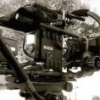
Capturing the best A7s skin tones
valery akos and one other reacted to j.f.r. for a topic
A7s produces beautiful log images which you can basically color/grade how you choose too. The first step is taking that log image and converting to REC 709, then you color to taste...... From my experience Sony A7s produces amazing colors and grades wonderfully, you just really have to spend some time with it and understand how it works. Here's a before/after picture of an unreleased Music Video (Artist: Gyptian) I worked on. Graded in RESOLVE and Tweaked in FINAL CUT2 points -
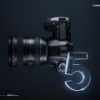
KineMini 4k raw, first impressions and graded test footage
ade towell and one other reacted to mtheory for a topic
I noticed that most of the China scaremongering is coming from RED fan boys. They should name their next camera "RED Neck".2 points -
austinchimp, I have the a7s since a couple of months and I am still on a path to get decent skin tones while having accurate colors. Trust me, I tested all those profile guides that I found on the net. s-log is at the moment no option to me since I want to have ISO 100 and i did not start using ND filters yet. Anyways, you might give those settings a go: Take PP2 as a base (with default values of course) and change the following: gamma: cine4 color mode: pro color phase: +5 These settings work amazingly well for me, here is one quick example: Another very important aspect I found out is setting the white balance manually to appropriate kelvin values. You can look them up using Google if you are not familiar with them. Interestingly, I found myself nearly always using 5600k during daylight circumstances, no matter whether it is shady or bright sun (even with snow!). Only on tungsten light or halogen, I change the white balance to about 3900k and within the above mentioned color profile, i change color phase to +2 (i use PP3 for that to change it more quickly), otherwise the image is very yellowish. You could give those settings a try. I would love to hear from you if it helped a bit since I am sure that this journey is not done yet.2 points
-

LG Digital Cinema Display Review - 4096 x 2160 IPS impresses!
Orangenz and one other reacted to Andrew Reid for a topic
What a moronic comment. What's the alternative - spend $10,000 replacing my Canon EF glass with Sony E-Mount, with most of them inferior or not even existing!?2 points -
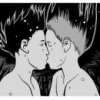
Snapshots
Liam reacted to Matt Kieley for a topic
kJust a little home movie of a trip to LA, shot on the NX1.1 point -

Capturing the best A7s skin tones
valery akos reacted to jcs for a topic
I started creating a tutorial for good skin tones on the A7S- higher priority projects have taken my time. There a many ways to get good skin tones on the A7S- creating custom profiles can help, though stock PP6 can work very well as is. Slog2 gamma with Pro or Cinema also works well. It is possible to get good skin tones with the A7S using Resolve and no LUTs at all: everything from scratch (scopes are indeed helpful). Casey posted some test images shot in Slog2 on dvxuser. Here is the thread: http://www.dvxuser.com/V6/showthread.php?334239-a7s-skin-tones-slog2-vs-pp-off-(shogun-4k) (IIRC, account login required to view images). Here are the stock Slog2+Sgamut images: Here are my grades (no LUTs- just the basic tools in Resolve): More blue to separate the foreground actor from the background, also changes the mood: Casey's PP Off shot: I prefer graded Slog2+Sgamut vs. PP Off. I use mostly tweaked Slog2 + Pro color and CINE1/CINE2/CINE4 + Pro or Cinema (tweaked). Casey also created some useful Stock PP7 (Slog2+SGamut) LUTS: http://www.dvxuser.com/V6/showthread.php?334831-a7s-slog2-3d-luts (based on the F65/55 LUTs).1 point -
KineMini 4k raw, first impressions and graded test footage
Kristoferman reacted to Michel_Juknat for a topic
actually this company who makes astronomy cameras founded a project about 5 years ago who's goal was to make digital cinema cameras after the first prototype was successfully produced and tested, Kinefinity Inc. was founded as an independent company (co-owned to a majority by the initial developers)1 point -

Black Magic Ursa Mini: Why would anybody buy a canon c1,3, or 500???
Oliver Daniel reacted to AaronChicago for a topic
Image-wise, the footage from the 4.6k Ursa that Captain Hook shot looks amazing. Second most organic looking picture to the Alexa IMO. I've owned 2 BM cams in the past are they were just a pain to use. Hopefully the Ursa mini makes for an easier workflow.1 point -
Lenses
Mattias Burling reacted to mercer for a topic
Matthias, that is one sweet piece of Zeiss. My question is... Do you find the lens or the bolex has more to do with the look of that video? Did you do any grading? The reason I ask is because the video looks so filmic. I would almost believe it was film if you swore by it. Very nice.1 point -

Capturing the best A7s skin tones
valery akos reacted to j.f.r. for a topic
S-LOG mode standard settings Graded in Resolve and Tweaked in Final Cut 1) DaVinci Resolve first node adjust exposure (highlights / lows / contrast) 2) 2nd node applied LUT ( I believe it was Kodak or similar, I have a whole bunch) 3) Tweaked in Final Cut (contrast) + fine adjustments to color in Colorista. I noticed A7s image has more green than normal so you simply bring it down judging by your waveforms and level them out & I like to push the blue (for skies , water, etc) It's a pretty long process it seems, but I think the final image is worth it.... I'm used to working with RED LOG files all of the time (work) and the Sony A7s holds up incredibly well in comparison. The main advantage of RED files though is being able to adjust white balance / iso / etc. as the camera shoots RAW, something A7s to my understanding is not capable of. Thanks1 point -
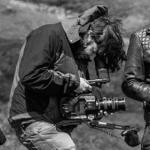
Black Magic Ursa Mini: Why would anybody buy a canon c1,3, or 500???
AaronChicago reacted to Oliver Daniel for a topic
Conpletely agree. Try using a rigged up RED Epic with a tiny crew and tell me it's easy. I'd love a C300 Mk II but it's too expensive for me - I'd be better off gunning for the FS7 or URSA Mini and use other funds to get lenses. It's a camera for high calibre freelancers and production companies. Yes, I do have my own production company making stuff week in, week out - but it's small with two directors and a part time accounts lady.1 point -
1 point
-

Black Magic Ursa Mini: Why would anybody buy a canon c1,3, or 500???
Oliver Daniel reacted to AaronChicago for a topic
Ease of use is highly under rated IMO. As much as a critic I am of Canons strategy and prices, its pretty damn nice to just pick up a camera and shoot for hours not worrying about assembly, batteries, rigs, monitors, attachments, etc. The new focus assist on C100 and 300 is very tempting.1 point -
one of my Bourne lenses I got cheap as it had dust and the zoom was stuck ...so I sent it off to Bob Rigby Cameras in the UK - it came back like new ! clean glass and zoom works fine now .....so DONT TRY do it yourself - I one took apart a Stuck Nikon 18- 105 zoom ....took me all day to get it working again and at one point I thought I had lost all hope of ever putting it back together again......they luckily I remembered how one stage went back together ...phew !! ....it now works fine but not worth the stress!! get your lens professionally looked at - it will last a life time then ........ 2501 point
-
KineMini 4k raw, first impressions and graded test footage
Raafi Rivero reacted to silvertonesx24 for a topic
Interesting questions. I would say, overall, yes it did. It was easy enough to run and gun if you need it, even though the camera is obviously built for crew shoots. Responsiveness is very good- certainly a breath of fresh air over Magic Lantern Raw. The battery grip is terribly overpriced but also very useful for run and gun. Menu navigation is snappy and intuitive, but the physical joystick navigation isn't as much so. I have had no problems on two shoots so far with crashes/hangs/general reliability. Being able to store 4 preset settings is useful and timesaving.1 point -

Black Magic Ursa Mini: Why would anybody buy a canon c1,3, or 500???
Nick Hughes reacted to mtheory for a topic
I'll give you a reason why someone would order a C300 MII, - if their company is paying for it. Plenty of small TV stations with crews, nevermind the bigger broadcasters.1 point -
The reason they do this is because there is a market for them to offer this cheaper options, thus it is in their interest to serve them too which expands their customer base and increases their company's revenue. Which enables them to do even more in the future. However... the cost to physically redesign the hardware and offer different actual hardware configurations is waaaay too costly for a small niche item. While doing it in software is relatively cheap, just go to flick off a setting here and there.1 point
-
Anamorphic Newbie
Hans Punk reacted to Bioskop.Inc for a topic
If you're going to spend $300, then don't buy one of those coloured lenses - they're big & have no character whatsoever. Try searching for a Sankor/Singer 16D or one of the Kowa's 8Z / 16H / Bell&Howell (sometimes rebranded as Elmoscope II) - there are bargins out there & a quick search of Ebay will give you plenty of better options for $300.1 point -

URSA Mini "on the cheap"?
IronFilm reacted to Oliver Daniel for a topic
Yes I would think we are talking about cinema cameras, as the URSA Mini seems specced for that purpose. Dynamic range is more important to me, but I do find it very useful if my camera can perform well under low light - it helps when you can use lights with less power (more portable, like LEDs) and be able to get a detailed, clean image. It's true that some shoots can be difficult when you have a tiny crew and a load of Arri Fresnels to rig up. My point in being is that many enthusiasts want the next best image quality, and will keep on buying camera after camera like they are chasing the dragon. When will the said enthusiast wake up and realise that moulding the light is the key to maximum image performance? An A7S won't do it for you. If I relied on low light capabilities then a lot of my images would be horrible. Those who are documentary/run&gun/shot grabbers/spontaneous - this might not apply to you.1 point -
My open letter to Panasonic. DVX200 will be lonely, needs a brother called AF200!
Jaime Valles reacted to Policar for a topic
The DVX100 had the impossibly fortuity of being a) an amazing low end broadcast camera/higher-end b camera with fantastic ergonomics and a standard format (miniDV) magically married to an unprecedented feature-set (24p!! and "looks"!!!!!!) that was scooped up by broadcast shooters and wedding videographers alike and b) the best "film look"/hobbyist camera for the money by FAR... with mojo (currently only Arri and to a lesser extent Canon and Dragon have mojo) In my day we had six stops of DR ISO 320 deep focus fixed lenses and 720X480 at best. And we walked six miles through the snow. Uphill. AND WE LIKED IT. NOTHING will ever target those two markets like the DVX did. Currently, Canon has corned one the first. Sony/Panasonic/Black Magic/a whole heck of a lot of others are scrambling to tackle the second. This could do well at making headway into the first, though. Shooters who balk at the awkwardness of a C100 and 24-105mm f4 IS will happily migrate to a more ENG-happy all-in-one package and shooters who balk at $20,000 for a C300 and 4k might happily choose this instead. The added depth of field will be wonderful for those who struggle to focus with a Canon, too. Ask yourself a question.... does raw appeal to you at all? Does a codec bigger than 50Mbps make you happy for the bits or sad for the disk space... If your answer is yes... you want the fun of figuring it out and encoding and ingesting and grading and making magic, this is not for you. If your answer is no... I want to deliver fast and make money.... it might be. The AF100 is VERY well-respected in pro circles. TONS of high end corporate and lower-end tv etc.... is shot on this workhouse cam that is rock-solid. Does the dvx200 have timecode sync? That is the biggest omission. This is really cool but not for me and not for most of you. Curious to see how it does. This (4k low end ENG camera/hobbyist camera for the not-super-techically-obsessed) is new idea. Do not want one, however...1 point -
I've had to intercut Canon and Alexa footage and it can be shockingly seamless. It's done on a lot of high end shows (Rush, Wolf of Wall Street, Need for Speed, tons of tv and surprisingly it's the Canon on the jib/crane getting the wide and the Alexas picking off coverage... only no one realizes that the shots aren't Alexa). But it sure takes a lot of work and you have to use the Canon either for close ups, low light, or low dynamic range portions of the image or expose more carefully because the Alexa just cleans up in terms of highlight roll off and rolling shutter reduction, though not much else. I'm also ashamed to admit that the best footage I've shot has been on the C100 (and some decent Epic stuff) and some of the worst footage I've shot was on the Alexa. But between the two cameras, the Alexa is SO MUCH better as regards IQ and the ergonomics are a miracle if you're transitioning from 35mm (not from dSLR). The C300 Mk II sample video does look troublingly awful, though. Canon's choice to go 8.7 under and 6.3 over (was it?) really bothers me. I was assuming they'd go for 6.7 under and 8.3 over (the Alexa is 7/7) when I learned about the C300 Mk II well before NAB. I think there will be a lot of C300 Mk II footage that looks so good we assume it's Alexa footage (and fwiw that video doesn't look that great to my eye, so obviously it's all about taste!) and you can redistribute your DR a lot better with a 10 bit codec than an 8 bit one and the "looks" designed to match other cameras will make this thing sell. Canon's roll-off doesn't oversaturate like SLOG2, but it's not quite Alexa. Blue Ruin was made by a lot of my friends. And I think it looks better than the video you mentioned, which has a cool anamorphic look and not much as regards composition or purpose and the lighting is very "broad strokes." Oddly enough, their mantra was more "camera doesn't matter, look doesn't matter, story matters" and yet it's the best-looking C300 feature I've seen. Really talented group of just awesome people! I don't think you could shoot Skyfall on a C300, though. Canon is a little plasticky and digital, though the look is excellent overall and the overall ergonomics/workflow make it very attractive at the low-end professional segment. I anticipate the C300 Mk will be the best of the best overall below Alexa (with the Dragon, which is great, cleaning up when you have the light to feed that hungry beast, but not under challenging conditions....), but the Alexa is the gold standard for a reason. That said, if your work looks worse than the video you've mentioned, and you have the budget to work at that level, camera isn't what's holding you back.1 point
-
Doubt SSD would happen in a future 4K recorder, but instead CFast. However having CFast *and* SD would be nice. Recording the main 4K ProRes HQ to the CFast card, with the SD for a backup ProRes 422 1080p.1 point
-
Before I got more serious into filmmaking, I created a custom tool to allow mapping any color to any other color. It used a 3D LUT, with trilinear or tricubic interpolation. The UI was in 3D, and 3D glasses were worn to edit the 3D cube lattice (editing was in stereo 3D). The UI provided 2D rendered slices through the 3D cube to help visualize the transform being created. The tool wasn't a retail product, but rather a tool used to figure out a solution to a specific problem. It was clear that while a 3D LUT is very powerful, the distortions created in the mapping can lead to 'color collapse', meaning many colors get mapped to the same value (banding, solarization, poor skin tones), and because the final values must be mapped back to a [0,0,0] -> [1,1,1] space, clipping or other techniques must be used, which can further create unwanted artifacts. 3D LUTs work best when the input is exposed in a way the LUT table 'expects' (per the design). Changing exposure before the LUT can radically change the output (or if shot too low/high). I purchased Film Convert and Impulz Ultimate, and while both are useful tools, I don't use them very often. I might use them more if they supported my (by far) favorite film stock: Eastman Kodak 100T 5248/7248. A 3D LUT cube can be converted to a 2D bitmap (and back to a 3D LUT): I used this method for an iOS app which needed fast real-time 3D LUTs. Here's a 3D LUT creator that works similarly to the custom tool I created (but with a 2D UI and 2D bitmap display): http://3dlutcreator.com/ When I watch movies on Netflix, when a scene has amazing color, I stop the movie and look it up on shotonwhat.com. I did this when watching Braveheart recently, on this scene: Shot with iPhone 5S on Sony XBR5 HDTV: The blue/magenta halo is not visible on the TV- iPhone 5S artifact. Screen shot on MacBook Pro in Safari (Netflix makes screenshots a challenge- most come out black; stopping on a good sharp frame is tricky as well. Here's a close sharp frame). Note the reduced brightness and contrast: HDTV image looks much better in real life!: Reading the Kodak paper on 5248 film: http://motion.kodak.com/motion/uploadedFiles/H-1-5248t.pdf , something interesting is apparent: sharpness varies with RGB (B is sharpest, followed by G, then R). Blurring the G and R color channels may help recreate the 5248 look (not possible with a 3D LUT alone). I stopped Men in Black II on a similar shot, with Will Smith in front and blue sky in back. Something magical about blues, skintones (pinkish) and 5248 film. The Last Samurai, The Fifth Element, Armageddon, Fight Club, American Beauty, Star Trek First Contact, The Shawshank Redemption, Baraka, and many more favorites- all shot on 5248.1 point
-

KineMini 4k raw, first impressions and graded test footage
IronFilm reacted to Oliver Daniel for a topic
Thanks for sharing - cool! I've always thought these cameras produce one of the most unique and pleasing images on the market. It's going to be difficult for them now the URSA Mini has been announced. On paper the URSA seems the better option, not to mention the solid distribution Blackmagic have worldwide. I want these guys to do well, they've done a great job. They need help though - let's hope they can get this image into the hands of more filmmakers.1 point -

URSA Mini "on the cheap"?
Axel reacted to Oliver Daniel for a topic
Totally get your drift, but others don't. Some people out there think a low light camera means you don't need lighting, which is a very bizarre way of thinking when shooting. (Excluding the spontaneous and some documentary stuff). There are many "tests" on Vimeo where opinions are based on cameras where substantial lighting hasn't been used. How can a cameras image quality be tested when it hasn't been given the ingredients it needs? (Excluding low light tests). The A7S for example, creates by far it's best image under decent lighting at a low ISO. I've historically made loads of my projects with very little money to nothing. Lighting never gets thrown aside. Last year I made a zombie music video in a complete blacked out lunatic asylum. I lit the entire thing with just 2 small LED lights and a reflector. Sure, I had the Sony FS700 (decent low light) but if I didn't bother moulding the light then the video would of been a waste of time. A lot of us camera nerds are so obsessed with cameras that we spent all our money on cameras and not the juice that feeds the image. Low light is a fantastic feature to get more information and clean images - but knowing how to mould that light, in whichever form or source with decent composition is the key to amazing images. It's what sets you apart. (And your ideas of course!) So when this brings me back to the URSA Mini and what it's intended for, it seems perfectly fine. I'll always have some form of light kit, even if it's a bit of foil on a piece of cardboard and a little torch to shine on it.1 point -

URSA Mini "on the cheap"?
IronFilm reacted to Raafi Rivero for a topic
I own a small set of lights, but I'm speaking more from the perspective of an indie filmmaker than as someone doing gigs for clients. With most jobs, you budget to rent or use lights (and depending on the budget, a nicer camera, lenses, etc.). Pass it on to the client. Your task is to create a buttery-smooth corporate image, and that often requires a higher level of ordnance than most of us have in our kits. But with an indie film you're up to your own devices and there's more incentive to bring the total cost of production down because there's even less of a backstop financially. Doing a 300 ft. cable run to light up the facade of some building in the deep background of your shot vs being able to crank the ISO and only light your foreground subjects is a huge financial (gear + time + manpower!) advantage. I never suggested that we would work completely without lights, but the promise of low-light capability is that you can do less lighting, and less of the most costly type of lighting.1 point -

URSA Mini "on the cheap"?
Axel reacted to Oliver Daniel for a topic
If low light is such an issue for low budget production - shouldn't more people actually consider buying a decent set of lights before upgrading to yet another camera body? Lights last for over a decade, camera body 2-3 years. I don't find low light much of an issue as I'm covered on all bases. Something a lot of the camera nerdy community forget is that lighting is No.1 for creating images (in aspects of tools).1 point -

A7S no successor at NAB 2015 ?
Ivar Kristjan Ivarsson reacted to TheRenaissanceMan for a topic
Internal 4K is at the bottom of my A7S II wish list, under IBIS, SLog 3, SGamut3.cine, 10-bit HDMI out, professional Look Profiles (like Rec709 type A) as picture profile options, smoother AF, the elimination of lossy RAW compression for stills, and less rolling shutter.1 point -

LG Digital Cinema Display Review - 4096 x 2160 IPS impresses!
Ivar Kristjan Ivarsson reacted to AaronChicago for a topic
Plasma TVs rule. Bought the last model of Panasonics before the end.1 point -

LG Digital Cinema Display Review - 4096 x 2160 IPS impresses!
Ivar Kristjan Ivarsson reacted to HurtinMinorKey for a topic
Am i the only one who wishes they still made plasma?1 point -
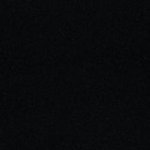
Blackmagic Micro Cinema vs Studio Camera - What are the differences?
IronFilm reacted to Xavier Plagaro Mussard for a topic
When I saw the Pocket in person I felt the LCD was shit. So it's better to make smaller cameras and you choose your LCD! Black Magic is really proving to be a forward-looking company! Five years ago they weren't a camera company at all and now they are!1 point -
The funny thing is, you can completely turn this around. You could say this is a 10 grand camera originally, but if you don't need certain features such as WiFi, Dual SDI or that battery grip you can knock the price down let's say by 1.5 grand. A different example: I like the URSA, but the iPad on the front annoys me. I would gladly save £500 and get rid of it, buying an extra CFast card instead.1 point
-

KineMAX review part 1 - adventures in 6K raw and 110fps slow-mo
IronFilm reacted to Kristoferman for a topic
It's still significantly cheaper than red though, even considering the extra charges. From what I've seen I like the image more than red too. Only thing really stopping me is the lack of customer service for the US1 point -
KineMAX review part 1 - adventures in 6K raw and 110fps slow-mo
IronFilm reacted to silvertonesx24 for a topic
One thing about Kinefinity..their prices may be attractive, but they're somewhat deceiving You want 6k, yes of course, add $1000You want high frame rates, add $1000You want a battery grip, which does add nice functionality, that's $349, and literally feels like a $30 Canon knockoffYou want SDI, that's $349Wifi, that's $349Kinestation (dirt-basic software) to transcode from KRW, $349And the funny thing, is that the base model brain is hardware-capable of all of these features. 6k, wifi, everything. You're paying thousands for firmware to "unlock" these features. Still no different that Redonomics, but I'd rather see someone truly disrupt rather than copy that shifty model at a lower price point.1 point -
"Here for the first time on EOSHD we have seen the potential of a top management consultant for Apple! You should be paid millions! You're a genius!" "You are living in cloud cuckoo land." Well Mr. Reid, I supposed anything less from you would have been unacceptable. Instead of debating on substance, you ridiculed the opponent. That's brilliant. For the record, and unwittingly on your part, you were right. I was with a major management consultant firm, whose services were retained by Apple, Samsung, and many CE products and services that at varying times you had hyped beyond hyperbole on one extreme and savagely sagged on the other extreme depending on the day of the week, or sometimes the hour of the day. There were sporadic balanced and objective analysis and discourse, but that's fast becoming a tantamount search for Waldo in the entire western hemisphere. "So you suggest to any future Steve Jobs that by being more vague and sweetening feedback to employees, you will get better decisions out of them and a better conceived product?" "In engineering, if there is a design problem you don't sweet talk it until it goes away or make the designer feel good about his terrible mistake." False on both counts. I did not suggest that feedback to one's own employees or from third parties to camera makers should be sugar coated or vague, what I did suggest was that management and user feedback should be assertive and tactful. There is a world of difference between what I said and what you thought I suggested. Effective communication is key and too much easier said than done. You want to convey the facts of what's not working, what went awry, and what would be the best alternative/end state without humiliating and demoralizing. If you glossed over my previous post, then I understand the misconjecture, please reread. I don't know if you have to work in a corporate environment and/or team environment, and charged with delivering results--quality results--both individually and at the same time collectively. This magnifies when a multitude of cross-functional teams have to collaborate toward a common goal. Essentially you're managing, balancing, directing a multitude of personalities all of whom are quirky on some level, and how you accomplish that is effective communication and interpersonal skills, not verbal diarrhea.1 point
-
Utterly uncalled for. Why stoop this low just because you assumed a different viewpoint from someone else? I see preschool and grade school children that conduct themselves with much better manner and less reproach. I have seen a good number of genuinely kind and even altruistic gestures from the gamut of photo/video forums across the blogosphere, but occasionally it's posts like this that flies in the face of basic decency and humility. Not only that it does not adds, but I believe it is outbursts like this that has a deleterious effect to the visual artisans and technicians community as a whole. If this trend continues, then I think we will have much more to loose than gain in our common pursuit for knowledge and growth here. Perhaps the great veil of anonymity through the iron curtain of the internet is conducive to malicious behaviors. I can hardly imagine such things being said in the physical presence of another person with so many to witness. No one is infallible, I had my own blunders just as you had yours and everyone else here and elsewhere. If you're having a bad day or for whatever reason had succumbed to your own emotional impulse, then that's understandable (though not excusable). I think a simple apology maybe in order here, of course that's entirely up to you. I don't know Max, I have read some of his blog comments, and believe him to be a learned and cultivated man. Although I may not necessarily agreed with some of the viewpoints he espoused, I do feel that he was offering constructive and cogent feedback to Andrew for the betterment of the blog. Everyone can exercise and benefit from a bit more civility, especially toward another artist and/or technician who shared the same passion for filmaking. Lets hold ourselves to a higher standard. Vitriol and ad hominen attacks are better left at the landfill. ========================================================================================================================================= On to the topic at hand. I don't doubt that the FS7's menu layout and operations are atrocious, though I much rather that Steve Job was not employ as a reference model, not because he was incapable of conceiving some of the most functional and beautiful design in gadgetry that the world has ever seen and put to good use, but precisely because he may have accomplish more by being more tactful and less corrosive/coercive with his interpersonal dealings/interactions. It's one thing being assertive and quite another being aggressive, and for some, that's a fine line. Shortly after Job passed, one of the senior executive at a top management consultancy asserted that Job exhibited his personal traits and management style not because they were particularly effective, but because they required less skills--soft skills that is. Agree or not, there is no denial of the man's legacy in technical and design prowess and the success that persists to this day. Personally, I think a more apt example for us here in the community is none other than James Cameron, whose personality is very much fungible with Job's, but has gone through a long evolution through his time spent out in the field in scientific explorations and expeditions. Cameron has recounted and acknowledged his shortcomings early in his career in directing the performance and work of his cast and crew. He readily admitted that a more collaborative approach, one that he had cultivated through his work with countless teams of scientists, deep sea explorers, and technical personnel would have suited him better as a filmaker in those formative years.1 point



